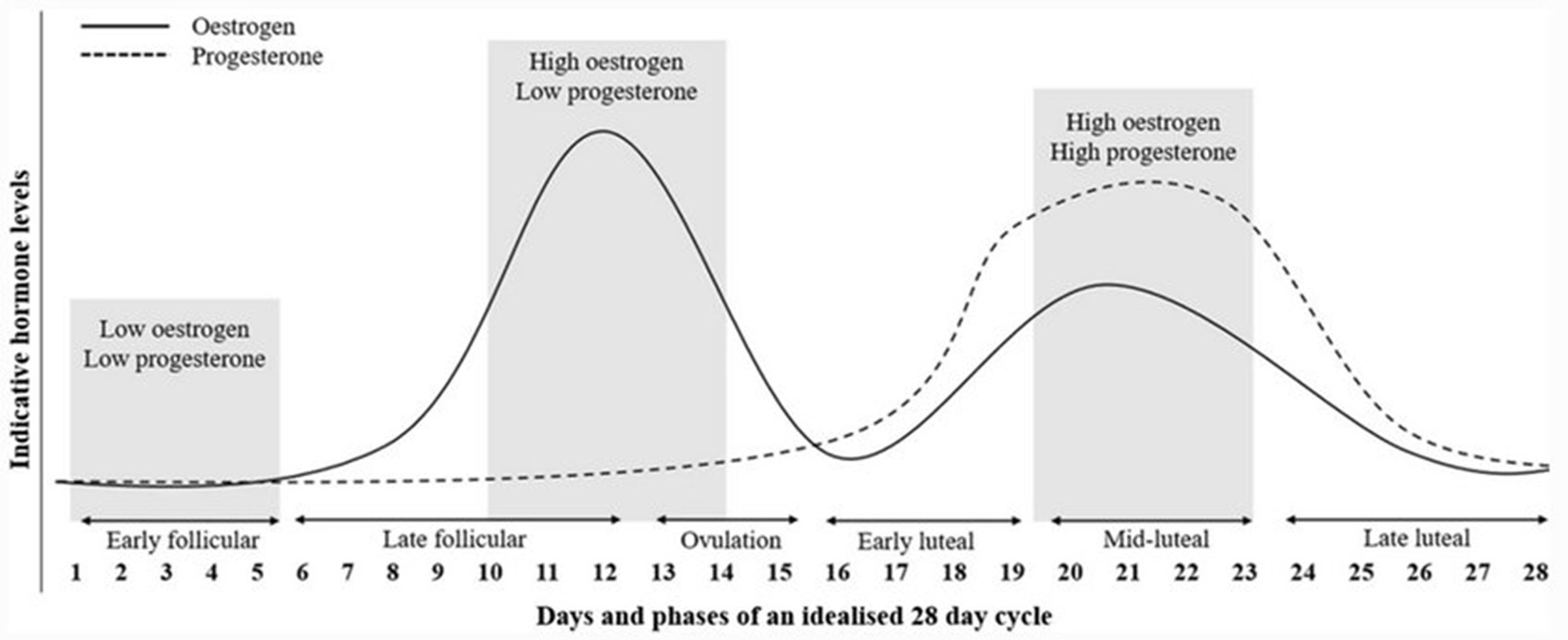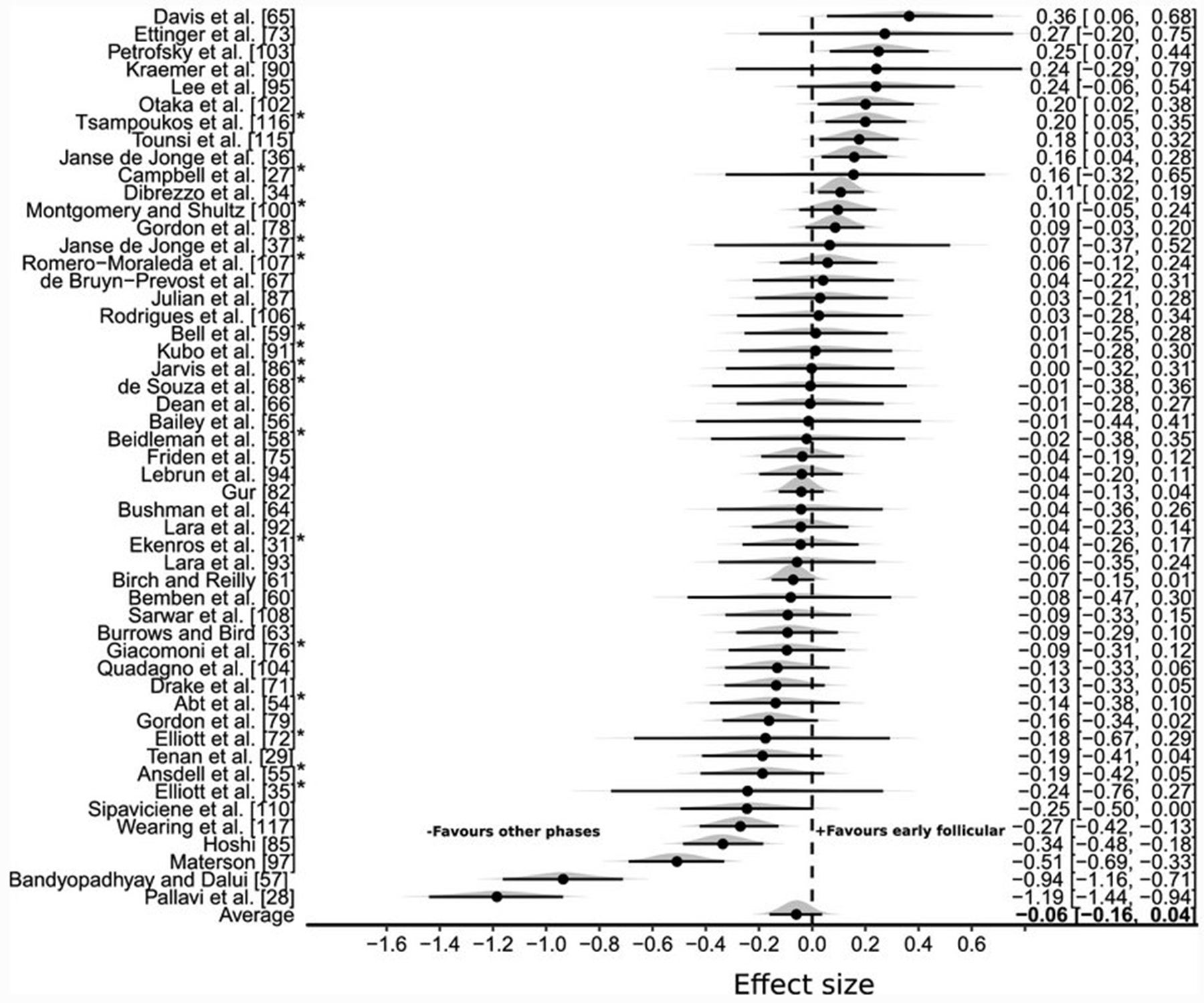The current status of research on sex differences in sports science brings to mind from a friend of Mark Twain’s named Charles Dudley Warner: “Everybody talks about the weather, but nobody does anything about it.” The problems with taking decades of research on mostly male subjects and simply assuming that the conclusions can be applied to women are clear, and people are certainly talking about them. But translating that new awareness into action, and identifying specific ways that women should train and compete differently than men, remains a challenge.
That makes in the journal Sports Medicine, published by a group of researchers in Britain co-led by Kelly McNulty of Northumbria University and Kirsty Elliott-Sale of Nottingham Trent University, all the more welcome. The research team performed a meta-analysis of all the studies they could find on the effects of menstrual cycle phase on exercise performance. The results, as it turns out, are as interesting for what they didn’t find as for what they did.
To start, some quick background. The two key reproductive hormones in women are estrogen and progesterone, and they rise and fall in a predictable pattern throughout the nominally 28-day menstrual cycle. (In practice, cycles aren’t always 28 days. The inclusion criteria for the subjects in this analysis was regular cycles ranging in length from 21 to 35 days.) Estrogen is considered to be potentially performance-enhancing, thanks to its effects on muscle-building, carbohydrate metabolism, and neuromuscular signaling. Progesterone, in contrast, inhibits the effects of estrogen.
Here’s a diagram from the paper showing the rise and fall of the two hormones (with estrogen picking up an extra “o” in the British spelling):

There are three key phases to note where the hormonal milieu has the sharpest contrasts. In the early follicular phase, both estrogen and progesterone are at their lowest. In the mid-luteal phase, they’re both elevated. This is the comparison that many studies make, assuming that you’d see the biggest performance differences between low-hormone and high-hormone phases. But the time around ovulation, when estrogen is at its highest without any interference from progesterone, might be even better for performance—in theory, at least.
The researchers located 78 relevant studies with a total of 1,193 participants, then assessed their quality, extracted the data, and performed a bunch of analyses. The clearest pattern emerged when they compared performance during the early follicular phase—the “bad” time—to all other phases. The performance measures included a wide variety of outcomes, both strength and endurance related, including race times, VO2 max, and power outputs.
Here’s what that data looked like, in the form of a forest plot. Each dot below represents a single study. If it’s to the right of the dashed vertical line, it means the subjects performed better during the early follicular phase than at other times; if it’s to the left, they performed worse. The horizontal lines attached to each dot show the uncertainty associated with each estimate; for example, a small study with few subjects would have a very wide line. And the dot at the very bottom shows the average of all the individual studies.

Take a good squint. Are there more dots to the right or the left of the line? There are a couple of studies at the bottom that are way out to the left, but otherwise it’s a pretty even split. The average result suggests a slightly negative effect size, meaning that overall performance was worse in the early follicular phase, but the uncertainty interval overlaps zero. The size of the effect, the researchers write, is “trivial.” Moreover, the huge variation between studies—some positive, some negative—makes it almost impossible to draw any general conclusions from this data.
There are a number of caveats worth acknowledging. The quality of many of the studies was judged to be poor, often because the methods used to assess menstrual cycle phase weren’t reliable. The wide range of outcome measures could also be an issue: for example, maybe certain cycle phases boost your endurance but reduce your strength, which could contribute to the mixed results. Similarly, the subjects in the various studies ranged from sedentary to elite athletes, who might have different responses. Still, the null result didn’t change when they included only high-quality studies (indicated by asterisks in the forest plot above).
As you’d expect, the researchers conclude by calling for more and higher-quality research in this area to provide better answers. For now, though, “the implications of these findings are likely to be so small as to be meaningless for most of the population,” they write. Athletes should consider their menstrual cycles and be aware of potential performance changes, but they shouldn’t assume that the average results apply to them. That message of individualization was highlighted by Canadian Olympic team sports physiologist Trent Stellingwerff: “I don’t think there is near enough published evidence to suggest nutrition and/or training advice changes throughout menstrual cycle phases,” he wrote. “Having athletes track period cycles with symptoms and with performance metrics via pen and paper [is] just as effective.”
That may seem like an unsatisfying conclusion. (“[W]e are not so special that there are 4 billion responses to our periods,” one critic responded on Twitter. “That’s absurd.”) But, as Stellingwerff countered, humans are incredibly variable and don’t always fall into neat patterns with actionable insights. It’s worth remembering that the Warner quote about the weather isn’t really suggesting that we should build a massive weather-altering device. It’s actually, as a in �Ჹ������’s Magazine pointed out, acknowledging the “subtle irony of human futility.” We still can’t change the weather, but we’ve learned a lot since Warner’s time about how to predict it. That’s probably the best approach here too, both for our collective understanding of performance fluctuations across the menstrual cycle, and for individual athletes planning their training and competition schedules: collect more data, and look for patterns.
For more Sweat Science, join me on and , sign up for the , and check out my book .


